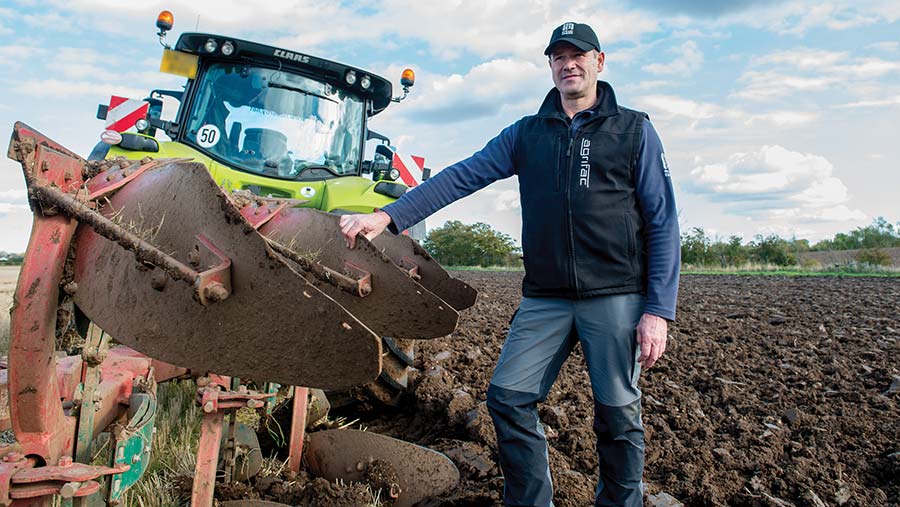Farmer Focus: Autumn drilling is racing ahead
 © Angus Findley
© Angus Findley Drilling has dominated recent weeks, as the focus moved from harvest to crop establishment.
Oilseed rape sowing was completed into drying seed-beds by 2 September, with the emergence of the crop coinciding with the unseasonably warm, if not hot, weather at the beginning of September.
See also: Organic grower tackles weeds with cereal/legume intercrop mix
The pesky flea beetle that has plagued growers further south has decided to move north and have a good chew on our crops.
We have, with some reluctance, sprayed our crops with pyrethroid sprays in an attempt to protect them at this most vulnerable stage.
I’m pretty sure we did have some success, although I think the resumption of more “normal” weather probably had the greatest effect.
We have now moved into a much damper period, with slugs now the area of concern.
I don’t suppose it will be long before the pigeons have a go as well. Despite all these challenges, the crop is establishing reasonably well.
Winter barley is also all in the ground and emerging nicely. Yield results suggest that early drilling and establishment in drier conditions pays dividends with winter barley on our farms.
We establish these very traditionally with the plough and a power harrow combination.
With very few chemical treatments for the likes of sterile brome and rats-tail fescue, using this method of establishment for the winter barley allows for a nice clean start, minimising volunteers and grassweed burdens.
It also allows our “big” drill to concentrate on winter wheat.
We currently have 65% of our winter wheat sown. Starting on 7 September probably seems early to most farmers south of the border, but with no blackgrass to delay drilling it is quite normal in this area.
We have had a bit of a shake up of our varieties this season, with a few that have been grown for the last time.
I often find it a little bit sad to say goodbye to the odd variety that has served us well.
This year that variety is Grafton. Despite always looking awful in the spring, this early sower has more often than not been at or close to the top of our yield table.
Its acreage will be swallowed up by the ever-consistent Graham and newcomer Zealum. Dawsum, Champion, Insitor, Skyscraper, Redwald and Extase will make up the rest.


